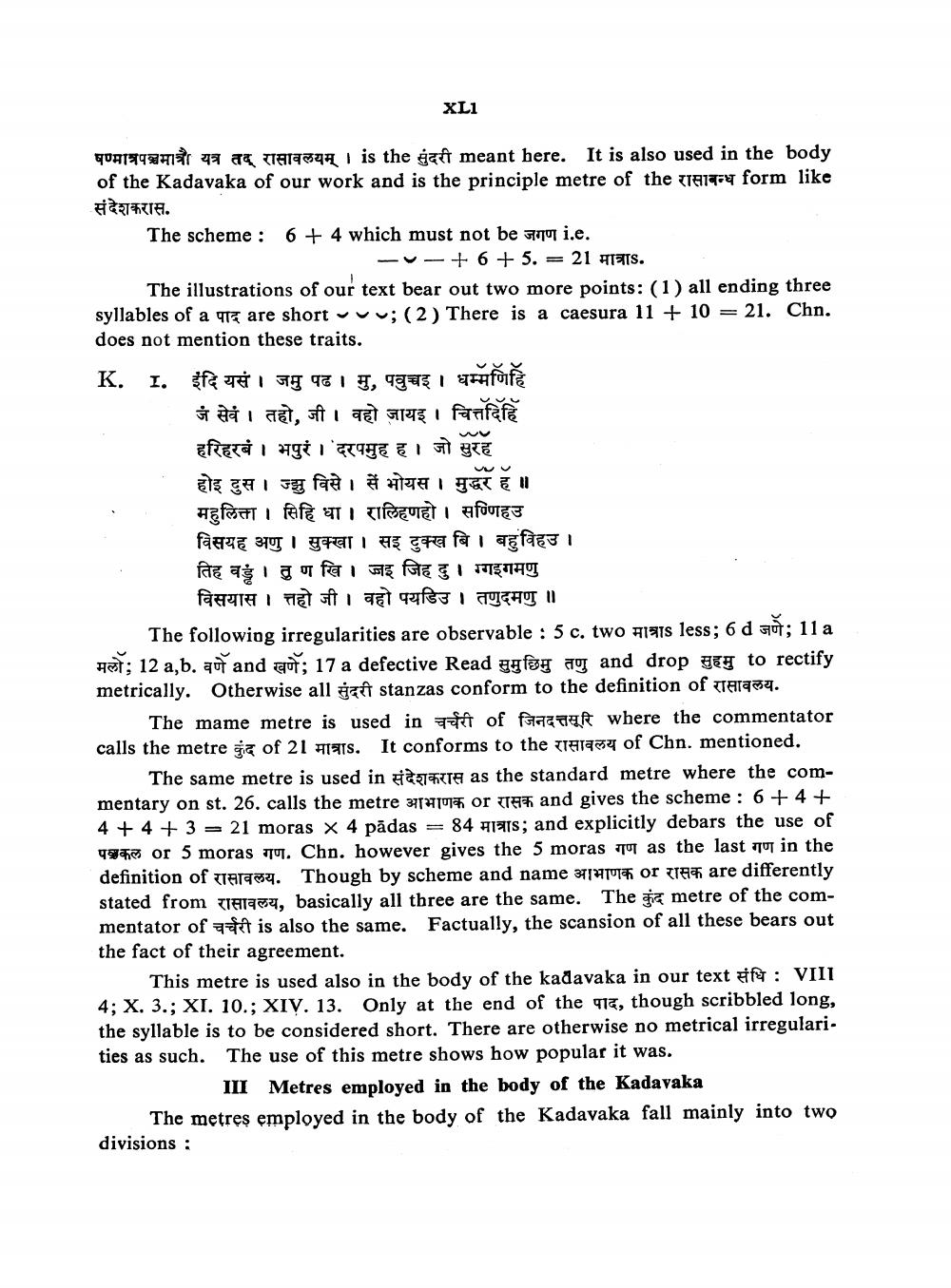________________
XLi
षण्मात्रपञ्चमात्रौ यत्र तद् रासावलयम् | is the सुंदरी meant here. It is also used in the body of the Kadavaka of our work and is the principle metre of the traipy form like संदेशकरास. The scheme : 6 + 4 which must not be put i.e.
-U- +6+ 5. = 21 IETS. The illustrations of our text bear out two more points: (1) all ending three syllables of a 9 are short vu; (2) There is a caesura 11 + 10 = 21. Chn. does not mention these traits. K. I. T I F T I T, 2 foite
जं सेवं । तहो, जी। वहो जायइ । चित्तदिहि हरिहरबं । भपुरं । दरपमुह ह । जो सुरह होइ दुस । ज्झु विसे। सें भोयस । मुद्धर ह ॥ महुलित्ता। सिहि धा। रालिहणहो। सण्णिहउ विसयह अणु । सुक्खा । सइ दुक्ख बि । बहुविहउ । तिह बडूं। तु ण खि। जइ जिह दु। ग्गइगमणु
विसयास । त्तहो जी। वहो पयडिउ । तणुदमणु ॥ The following irregularities are observable : 5 c. two hiats less; 6 d Ft; 11 a मलो; 12 a,b. वणे and खणे; 17a defective Read सुमुछिमु तणु and drop सुहमु to rectify metrically. Otherwise all ich stanzas conform to the definition of Tarq54.
The mame metre is used in चर्चरी of जिनदत्तसूरि where the commentator calls the metre ja of 21 hs. It conforms to the 1914 of Chn. mentioned.
The same metre is used in ante as the standard metre where the commentary on st. 26. calls the metre 3 0h or Tan and gives the scheme : 6 + 4+ 4 + 4 + 3 = 21 moras x 4 pādas = 84 has; and explicitly debars the use of 494 or 5 moras Tu Chn. however gives the 5 moras tu as the last tu in the definition of रासावलय. Though by scheme and name आभाणक or रासक are differently stated from a 34, basically all three are the same. The gia metre of the commentator of 4 is also the same. Factually, the scansion of all these bears out the fact of their agreement.
This metre is used also in the body of the kadavaka in our text : VIII 4; X. 3.; XI. 10.; XIV. 13. Only at the end of the 917, though scribbled long, the syllable is to be considered short. There are otherwise no metrical irregularities as such. The use of this metre shows how popular it was.
III Metres employed in the body of the Kadavaka The metres employed in the body of the Kadavaka fall mainly into two divisions :




